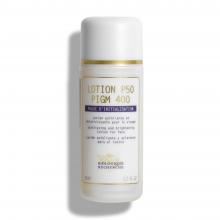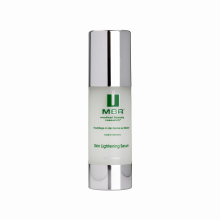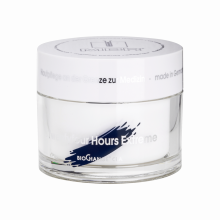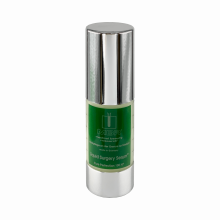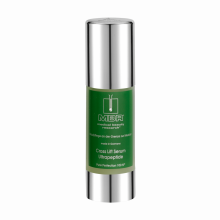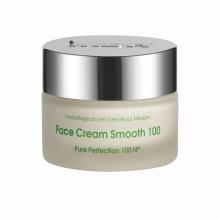Skin Care at 40 and Beyond
There is a sharp decrease in our hormone and growth factor levels in our fourth and fifth decades. There is a lot of cell damage, but the skin is affected the most. That basically translates to a slower rate of skin self-repair and slower renewal rates.
Because of either approaching or having undergone menopause, women in their 40s and 50s tend to suffer dramatic hormonal changes- usually their estrogen and progesterone levels. The reduction or complete loss of these hormones reduces sebum production and leads to dry and thin skin. In men, it is the decline of testosterone that leads to thinning or drying skin. In men, however, the effects are not nearly as abrupt.
Excessive inflammation is another problem faced by older skin. Although age-related inflammation is often not visible, it frequently results in some immune system cell abnormalities, which can further increase harmful free radicals and lead to increased cell damage.
The visible changes that can result from the above problems are:
- The drying out of the epidermis - the skin's outer layer- leading to dull, dry, or parched-looking skin,
- The weakening or thinning out of the dermis - the skin's middle layer - leading to the development of lines and fine wrinkles.
- The deepening of motion wrinkles. When a person continuously frowns or squints, the repeated folding of the skin results in visible lines. Because the dermis has been weakened, it loses its ability to rebound from the continuous folding of the skin, thereby leading to deeper and more permanent motion wrinkles.
- Broken capillaries, redness, blemishes, discoloration, and other typical age-related skin abnormalities.
- Sagging skin due to the above changes and added by the loss of the fat layer just below the dermis.
Of course, we can't avoid the aging process, but we can prevent, eliminate, or at least reduce some of the effects that aging foists upon us. Of course, there is a myriad of treatments available for people in their 40s and 50s, but here are a few essential items that can get you going:
Hydrate yourself. After 40, our skin begins to dry out more and more. So it's a good idea to make sure you drink at least eight glasses of water per day. Also, depending on your skin type, add oil-free moisturizers to your daily skincare routine.
Reduce or Eliminate Wrinkles
Some skin care agents have been proven to have wrinkle-reducing effects, which can help fight those wrinkles and fine lines immediately. The most widely tested and proven active ingredients are retinoids (e.g., tretinoin, a.k.a. Retin A) and the vitamin C family (L-ascorbic acid and some of its derivatives).
Topically applied estrogens and progesterone
There is evidence showing that the topical use of estrogens and/or progesterone for replenishing skin levels of the sex hormones improves skin hydration, reduces wrinkles, increases epidermal renewal rates, and produces another beneficial effect in women near or past menopause. When any topical agent is applied, small amounts of the active chemical are absorbed into the bloodstream. Therefore you should never undertake this type of treatment without a physician. Topical applications of hormones must be medically supervised.
Products conaining phytoestrogens
Exfoliate - as needed
When we get over 40, our skin cells are not replaced as quickly as before, and our epidermis tends to become drier and thicker than when we were younger. If you notice that your face seems duller or drier or has an uneven texture, you may want to consider adding exfoliation to your weekly routine. You want to be careful with exfoliation as it can significantly irritate your skin. Start with mild exfoliating agents (such as a sugar scrub) and, if need be, gradually build to mild chemical exfoliates.
Exfoliators
Problems with Pigmentation
Blotches and age spots, and other age-related skin pigmentation problems are typical after 40. Almost all age-related skin pigmentation problems are caused by increased production of melanin- a skin pigment. Topical skin-lightening agents are usually enough to solve the problem. However, you should check with your doctor to see what treatment best suits your needs.
Products containing Melanin inhibitors
Botox
Motion wrinkles- that is, wrinkles caused by the folding of the skin, are treatable with injections of botulinum toxin, commonly referred to a Botox. This has been proven especially useful for frown lines, generally found on the forehead. People over 40 tend to have lines that seem set in stone; they are very resistant to traditional anti-wrinkle creams, laser treatments, chemical peels, or other similar agents. While Botox works quite well with frown lines, crow's feet, and scowl lines, it is ineffective for smile lines or wrinkles not caused by motion.
Products with botox-like snake venom tripeptide
More intensive "second line" treatments/procedures
Medical professionals should consider second-line treatments/procedures usually performed if your skin is resistant to topical agents and other simple self-administered treatments. Second-line treatments include lasers, dermal fillers, chemical peels, botulinum toxin (Botox) injections, and others. In order to match the problem to the appropriate treatment, you must consult with a physician before undertaking any of the second-line treatments mentioned.







